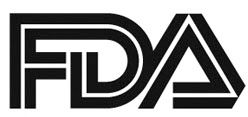FDA Approves Fedratinib for the Treatment of Primary/Secondary Myelofibrosis
The FDA has approved the treatment of fedratinib for the treatment of adult patients with intermediate-2 or high-risk primary or secondary myelofibrosis, including post-polycythemia vera or post-essential thrombocythemia myelofibrosis.

The FDA has approved the treatment of fedratinib (Inrebic) for the treatment of adult patients with intermediate-2 or high-risk primary or secondary myelofibrosis, including post-polycythemia vera or post-essential thrombocythemia myelofibrosis.1
This marks the first approval for patients with myelofibrosis in close to 10 years.
“Prior to today, there was one FDA-approved drug to treat patients with myelofibrosis, a rare bone marrow disorder. Our approval today provides another option for patients,” Richard Pazdur, MD, director of the FDA’s Oncology Center of Excellence and acting director of the Office of Hematology and Oncology Products in the FDA’s Center for Drug Evaluation and Research, said in a press release. “The FDA is committed to encouraging the development of treatments for patients with rare diseases and providing alternative options, as not all patients respond in the same way.”
Approval for fedratinib was supported by data from multiple studies, including JAKARTA and JAKARTA2, which investigated 608 patients treated with the selective JAK2 inhibitor. Of these, 459 had myelofibrosis and 97 patients had received prior treatment with ruxolitinib (Jakafi).
JAKARTA was an international, double-blind, placebo-controlled, 3-arm phase III study of fedratinib at varying doses versus placebo in patients with myelofibrosis.2Patients were required to have intermediate-2 or high-risk disease by International Prognostic Scoring System (IPSS), a platelet count of ≥50 × 109/L, and splenomegaly before 1:1:1 randomization to receive either 400 or 500 mg of fedratinib, or placebo. Fedratinib was given orally once daily consecutively in 4-week cycles. Patients were eligible to crossover to one of the fedratinib arms following progression on placebo.
The primary endpoint of the trial was spleen response rate, defined as ≥35 reduction in spleen volume from baseline at week 24. Secondary endpoints included symptom response rate and safety.
Of the 289 patients randomized, the median age was 65 years, 59% were male, 63% had primary myelofibrosis, 48% had high-risk disease, and 67% were positive for aJAK2V617F mutation.
At week 24, the spleen response rate was 47% with 400 mg fedratinib, 49% with 500 mg fedratinib, and 1% with placebo. Confirmation at week 28 showed spleen response rates of 36%, 40%, and 1%, respectively (P<.0001).
In the 400 mg fedratinib arm, the symptom response rate was 37%, compared with 34% with 500 mg fedratinib and 7% with placebo (P<.0001).
The most common all-grade non-hematologic treatment-emergent adverse event (TEAE) with fedratinib was diarrhea (66% with 400 mg and 56% with 500 mg); grade 3/4 diarrhea was reported in 5% of patients in each fedratinib arm.
The most frequent hematologic TEAE was anemia, and grade 3/4 anemia was noted in 25% of patients in the placebo arm, 99% with 400 mg fedratinib, and 98% with 500 mg fedratinib. Grade 3/4 thrombocytopenia was also observed in 9%, 17%, and 27% of patients in the placebo, 400 mg fedratinib, and 500 mg fedratinib arms.
At week 24, 25% of patients in the placebo arm discontinued treatment along with 22% in the 400 mg fedratinib arm and 32% in the 500 mg fedratinib arm. Twenty-five patients died on the study, including 10 in the placebo arm, 5 in the 400 mg fedratinib arm, and 10 in the 500 mg fedratinib arm, most commonly due to disease progression followed by adverse events (AEs).
JAKARTA2 was a single-arm, open-label, non-randomized, multicenter phase II study of fedratinib in patients with intermediate or high-risk primary or secondary myelofibrosis who were resistant to or intolerant of ruxolitinib.3Patients were required to have palpable splenomegaly, an ECOG performance status of 0 to 2, and a life expectancy of 6 months or less. Those enrolled received a starting dose of 400 mg of fedratinib for 6 consecutive 28-day cycles.
The primary endpoint was spleen response, which was conducted in the per-protocol population only.
Ninety-seven patients received at least 1 dose of fedratinib, and 83 of these patients were evaluable. Of these, 55% (95% CI, 44%-66%) achieved a spleen response.
The most common grade 3/4 AEs included anemia in 38% and thrombocytopenia in 22%. Nineteen percent of patients discontinued treatment due to AEs and 7% of patients died during the study, although none of the deaths were considered treatment related. Any patients with suspected Wernicke’s encephalopathy were terminated from the study.
A re-analysis of the JAKARTA2 study presented at the 2019 ASCO Annual Meeting evaluated patients in the trial with a more stringent definition of ruxolitinib failure.4Seventy-nine patients met the new criteria, with 65 defined as refractory to ruxolitinib and 14 as intolerant of ruxolitinib. The spleen volume response rate in this population was 30% (95% CI, 21%-42%) and the symptom response rate was 27%.
The label for fedratinib includes a Boxed Warning on the risk of serious and fatal encephalopathy, including Wernicke’s. The FDA advises healthcare professionals to assess patients’ thiamine levels before starting treatment and that fedratinib should be immediately discontinued if encephalopathy is suspected.
Previously the FDA had granted a priority review and an orphan drug designation to fedratinib in this setting.
References:
- FDA approves treatment for patients with rare bone marrow disorder. FDA website. Posted August 16, 2019. https://bit.ly/2ZawBtI. Accessed August 16, 2019.
- Pardanani A, Harrison CN, Cortes JE, et al. Results Of a Randomized, Double-Blind, Placebo-Controlled Phase III Study (JAKARTA) Of The JAK2-Selective Inhibitor Fedratinib (SAR302503) In Patients With Myelofibrosis (MF).Blood.2013;122(21):393.
- Harrison CN, Schaap N, Vannucchi AM, et al. Janus kinase-2 inhibitor fedratinib in patients with myelofibrosis previously treated with ruxolitinib (JAKARTA-2): a single-arm, open-label, non-randomised, phase 2, multicentre study.Lancet Hematol.2017;4(7):317-324. doi: 10.1016/S2352-3026(17)30088-1.
- Harrison CN, Schaap N, Vannucchi AM, et al. Fedratinib (FEDR) in myelofibrosis (MF) patients previously treated with ruxolitinib (RUX): A reanalysis of the JAKARTA-2 study.J Clin Oncol.2019;37(suppl; abstr 7057).